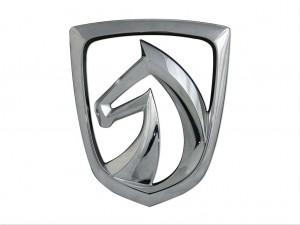With Chinese booming auto market spreading across the country, General Motors has launched a new joint venture aimed at capitalizing on demand for smaller low-cost cars.
The new Baojun brand is a three-way joint venture established by GM and its partners SAIC and Wuling Motors. They currently cooperate on the production of a low-priced microvan, but under Baojun will focus on small cars aimed at the next generation of Chinese buyers in the country’s second and third-tier cities.
The project, GM says, will exclusively target China, though some industry observers believe it could eventually provide a production base for GM to ship products to other emerging markets in Asia and other parts of the world.
“The introduction of Baojun is part of GM’s multi-brand strategy in China,” said Kevin Wale, the president of the fast-growing GM China Group. “Baojun will complement our other brands sold in China including our fastest-growing mainstream nameplate, Chevrolet. It will enable us to better address the increasingly segmented Chinese vehicle market.”
GM’s latest move reflects its increasing focus on China, which so far this year has been a larger market for the maker than the United States. GM is locked in a pitched battle with the German Volkswagen AG for dominance in China, VW announcing expansion plans of its own just last week.
China is currently the world’s largest national auto market, taking the lead from the troubled U.S. market last year. While demand has been slowing, Chinese car sales have continued to grow at a double-digit rate so far this year.
Future growth could be fueled by an expansion of the market beyond the fertile Pacific coastal crescent that includes cities like Beijing and Shanghai. China has more than 200 cities with populations of more than 1 million residents, and until now car demand has remained low outside the key, heavily industrialized eastern region. But investments are booming in other parts of China – driven in part by the rise in labor costs in developed cities like Shanghai, where GM set up its first assembly plant a decade ago.
But with wages relatively low in other parts of the country, the three partners, GM, SAIC and Wuling believe their best chance is to emphasize the small, relatively stripped-down models that will be marketed under the Baojun badge.
Despite the emphasis on price, “We aim to surpass customer expectations by creating a brand that combines world-class quality with low ownership costs,” said Shen Yang, general manager of GM-SAIC-Wuling.
The partners clearly have some experience with the entry-level Chinese market. The joint venture, established in 2002, has sold more than 1 million Wuling microvans, the base models going for less than $5,000.
Baojuan, which translates into “treasured horse,” is the latest in an expanding line-up of GM brands in China. Along with Baojuan and Wuling, the U.S. maker also sells Buick, Chevrolet and Cadillac vehicles in China, as well as models marketed under its European Opel nameplate. This brand expansion is in sharp contrast with the U.S., where GM slashed in half its vehicles divisions after emerging from bankruptcy, last year. It now sells products only under the Chevrolet, GMC, Cadillac and Buick marques.
In fact, GM officials acknowledge, Buick might not exist in the States, any longer, were it not for the success of the brand in China, where it is the maker’s best-selling division. GM’s Shanghai-based PATEC design and engineering center will be playing an increased role in the development of future Buick products worldwide. PATEC is also developing the new Baojuan brand’s models.


I don’t care who the joint venture is with, G.M. Ford or Rolls Royce. Low cost “made in China” sounds like the recipe for a death trap!